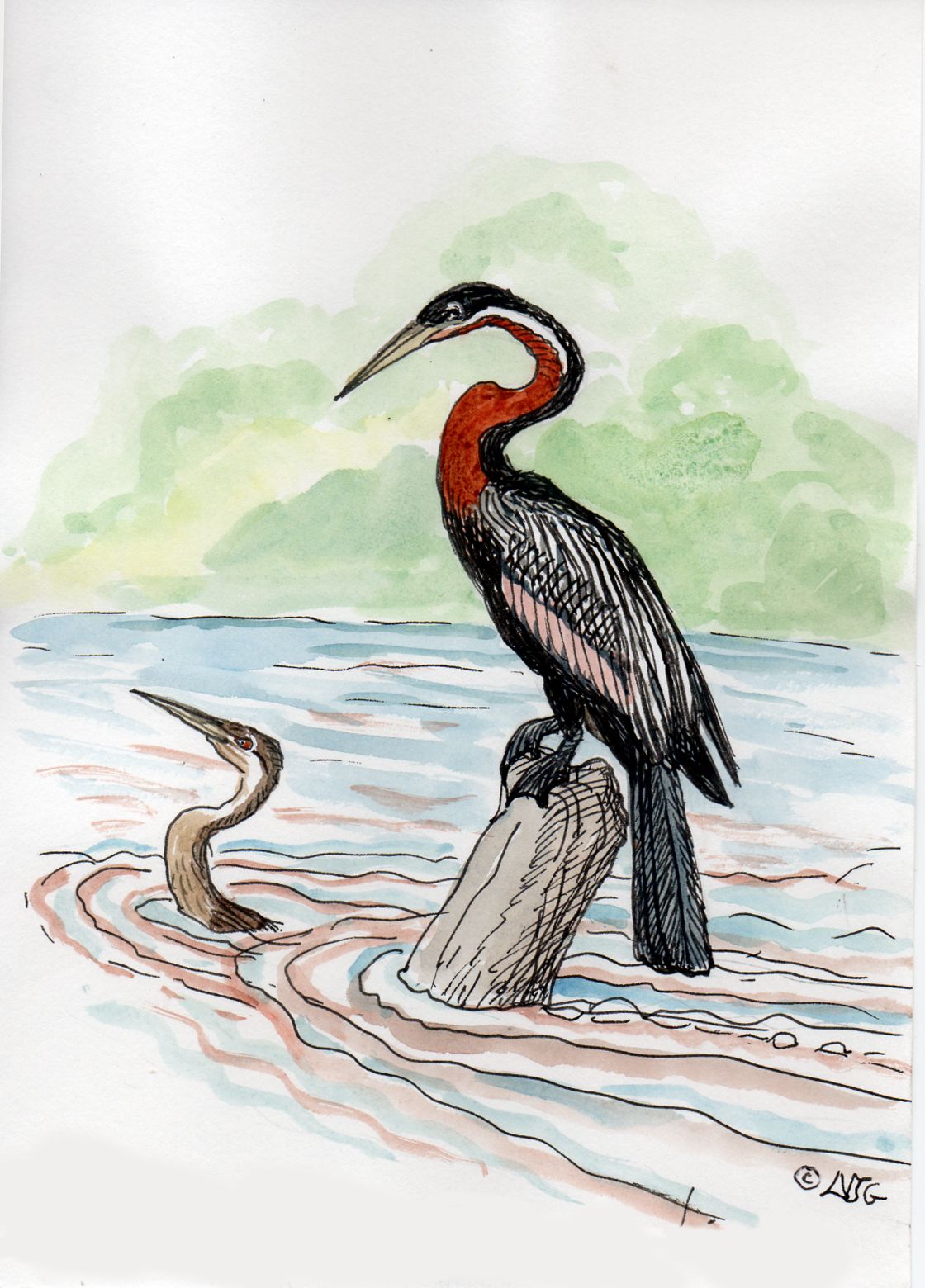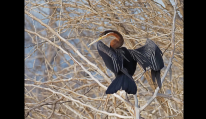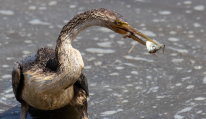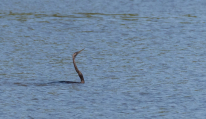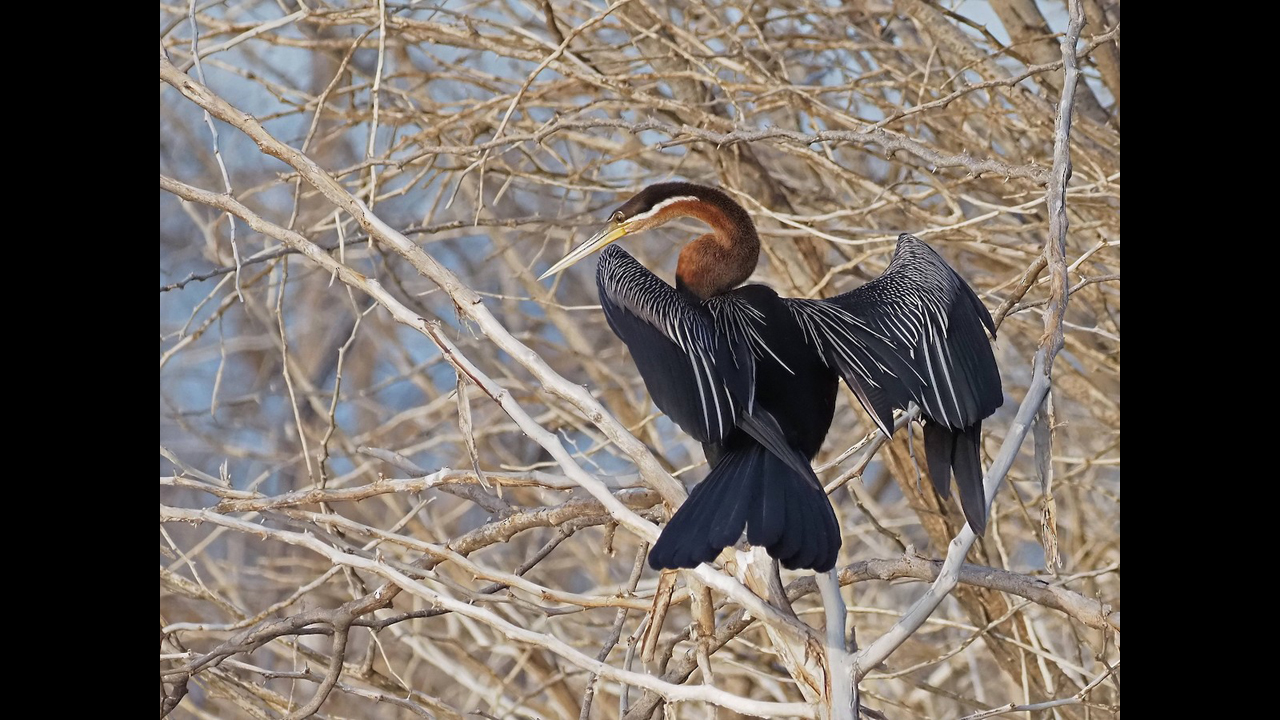Social Structure
Often found alone or in pairs, African darters will sometimes form larger flocks on still or slow-moving waters.
Communication
The African darter is generally silent, but near its nest, it may call with a variety of grunting and staccato barks.
Behavior
At home in the water, on land, or in the air, the African darter can dive for long periods to successfully ambush its next meal. After a dive, it perches on stumps, branches, or jetties and stretches out its wings to air-dry, since its feathers are not waterproof.
Conservation
Least concern
Diet
While the African darter mainly subsists on fish, it will also eat snakes, terrapins, amphibians, insects, and even mollusks. After catching their prey underwater, they surface and toss it into the air, and then catch it and swallow it.
Breeding
African darters are monogamous, and although breeding can occur at any time, it is usually a seasonal event, and breeding colonies are formed with cormorants or other birds. African darter females will build a platform nest of sticks and reeds above or next to the water. Males and females take turns incubating up to 6 eggs for a month. Both parents take care of the chicks after they hatch, and the chicks fledge around 7 weeks later.
Friends & Foes
Predators include ravens, raptors, crows, eagles, and crocodiles; humans also can pose a threat through habitat destruction and by collecting their eggs.
Population in Kenya
It is found throughout Kenya.
Range & Habitat
African darters are common in many sub-Saharan African countries and it is one of the most frequent water birds seen in Kenya.
Since they forage in water, this diving bird needs to be around the fresh and brackish wetlands of shallow lakes, swamps, lagoons, and lazy rivers fringed by trees, reeds, or mangroves suitable for roosting.

